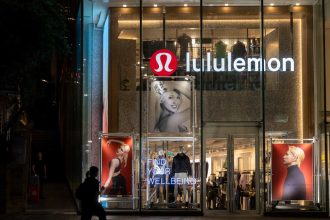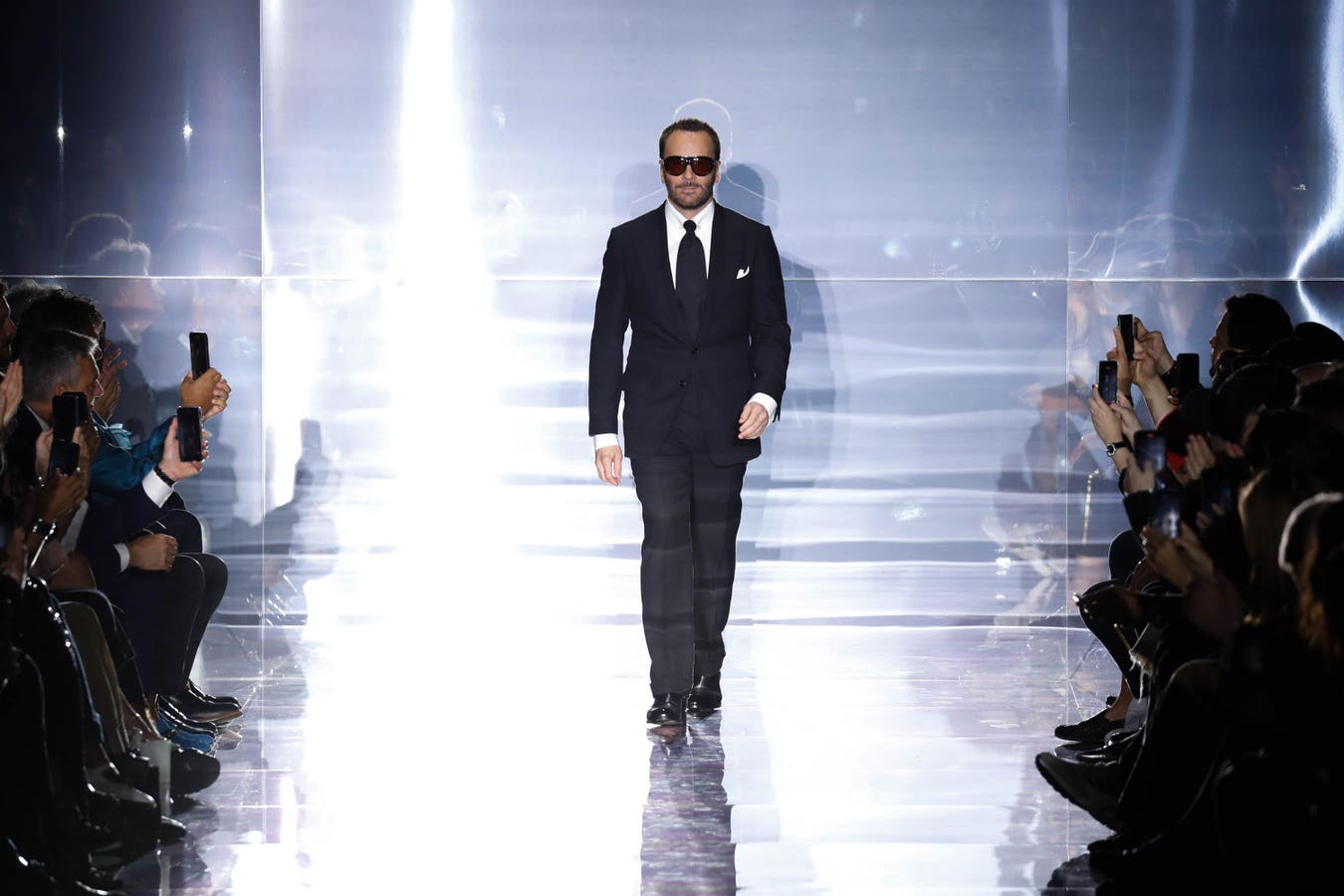Ermenegildo Zegna Group just delivered preliminary revenue results for fiscal 2023, and they’re impressive. Revenues advanced 28% year-over-year, up from $1.6 billion (€1.5 billion) to $2.1 billion (€$1.9 billion). These are unaudited results and the final earnings report is to come, yet it’s a remarkable performance in a turbulent personal luxury goods market that only grew 4% last year.
Across Zegna Group portfolio of brands, its “quiet luxury” Zegna menswear branded products advanced 20% to $1.2 billion, US-based Thom Browne brand known for its modern approach to the tailored work “uniform” posted 15% growth, reaching $409 million, and the recently acquired Tom Ford Fashion brand contributed another $255 million to its topline, including $105 million in the fourth quarter.
In addition, Zegna maintains an active textile and licensed branded business, but it is expecting great things to come from the Tom Ford Fashion brand that captures the provocative sexiness and glamour which defined Tom Ford’s style from his early days at Gucci and Yves Saint Laurent, then on to his eponymous fashion house in 2005.
Ford, however, has stepped away from fashion and leaves the creative direction to Peter Hawkings who started apprenticing under him at Gucci in 1998, then followed him to the Tom Ford brand.
Hawkings’ first solo outing was last September’s Spring/Summer 2024 show at Milan Fashion Week. There he maintained Ford’s signature style codes while bringing men’s and women’s wear together in a more cohesive way, guided by a vision of the “Tom Ford couple.”
Previously, Hawkings designed menswear from London and women’s fashion was handled out of Los Angeles. “I think there was a disconnect before, for sure,” he shared with British Vogue. “Now, it’s under one roof.”
But that roof is actually two: beauty-industry giant Estée Lauder, which owns the brand, and its fashion licensing partner Zegna Group with its deep roots in luxury fashion manufacturing and sourcing.
Tom Ford Fashion CEO Lelio Gavazza, who joined Zegna Group last September from LVMH-owned Bulgari jewelry brand, supplies business leadership on the fashion side. Gavazza reports directly to Group chairman and CEO Gildo Zegna, grandson of Ermeneglido Zegna who founded the business in 1910.
Long History, New Results
Zegna Group has been the licensee of Tom Ford menswear since 2004 until its expiration after the Fall/Winter 2022 collection. A new agreement was signed in January 2021 for a more limited range of goods only to be revised again in April 2023 after Estée Lauder acquired the Tom Ford brand in a deal valued at $2.8 billion.
This shifted Tom Ford brand from reporting under Zegna Group’s third-party brands, which also include some Gucci and Dunhill products, to its own line. Last year third-party brands generated $106 million in revenues, but with the shift, only $27 million in 2023, a 74% decline.
Zegna Group now has an exclusive 20-year license, plus the opportunity of a ten-year extension, for the fashion side of the brand, including apparel, shoes and leather goods for men and women, and it has plans to extend the brand into a children’s and home line. Pricing will range from more affordable aspirational to “absolute” luxury.
Given Zegna Group’s leadership in luxury men’s fashion, about 70% of Tom Ford Fashion sales currently come from the men’s side and only 30% from women’s. Appropriately, it sees a long runway in women’s, especially in shoes and handbag accessories.
Zegna Group will also give Tom Ford Fashion a bigger playing field. It plans to double the number of directly-operated stores from 51 to more than 100 over the next few years, eyeing 18 to 22 new stores in EMEA, 12 to 16 in APAC and eight to 12 in the Americas. So far, new Tom Ford stores are confirmed in Beijing, Singapore, Rome and St. Moritz.
In the mid-term, Zegna Group expects to grow the Tom Ford Fashion brand by 10% CAGR, but if the momentum from the fourth quarter keeps going, it could be a nearly $500 million brand this year.
Potential Spanner In The Works
While the Zenga Group and Estée Lauder partnership is framed as a licensing agreement, it looks like a departure from traditional licensing deals and more a real partnership.
There’s no question, Tom Ford is a powerful brand in the beauty business, but Tom Ford (the man) made his brand name a force to reckon with through fashion. The companies did not respond to a request for comment.
Now, with the brand under control of a beauty company, it has a “tail wagging the dog” feel. On the other hand, NYU Professor Thomaï Serdari, who’s studied the brand with her students, shared that Tom Ford Beauty greatly expanded its reach into the broader consumer marketplace, so beauty may well take the lead. As such, it made perfect sense for Estée Lauder to ultimately acquire the brand.
“EL has the talent, operational and marketing know-how to grow a luxury beauty brand. With Zegna as operational partner in fashion, it’s found a way for the beauty and fashion brands to grow together under strict control, which luxury demands,” she said.
However, Estée Lauder hit a speed bump in its most recent third quarter, with sales down 7% to $4.3 billion from $4.6 billion previous year. Net earnings took an even bigger dive, down 20% from $394 million to $313 million. As of yet, the company reports, “The acquisition of the Tom Ford brand was neutral to EPS.”
Cross-Functional Ties
The two company’s reporting relationships are also complicated. Tom Ford CEO Guillaume Jesel and Creative Director Peter Hawkings work for Estée Lauder with Hawkings having a “matrix reporting line” to Tom Ford Fashion CEO Lelio Gavazza.
Jesel, who Serdari praises as “very talented,” has a long history with Estée Lauder and its Tom Ford Beauty business. He will lean on Hawkings and Gavazza for the brand’s fashion direction.
Despite the long term relationship Zegna Group has with the Tom Ford brand, Estée Lauder is sure to imprint a new corporate cultural dynamic into the relationship. Gavazza, being new to the Zegna Group, will have to adapt to his parent company’s culture while also learning to navigate Lauder’s.
Serdari sees these complicated cross-corporate and reporting structure relationships as part of the natural evolution of the luxury business model as brands stake their claim to lifestyle status.
“Wherever luxury brands got their start in the 20th century, in clothing, accessories, leather goods or beauty, they’re all striving to be lifestyle brands. Ultimately, for brands to grow, they have to get out of their vertical space, while not compromising the integrity of the brand,” she said.
The Tom Ford brand partners all share the same goals: growing the Tom Ford brand in their two separate but complimentary markets. It could get tricky, so here’s hoping all play well together and for a long time.
Read the full article here





